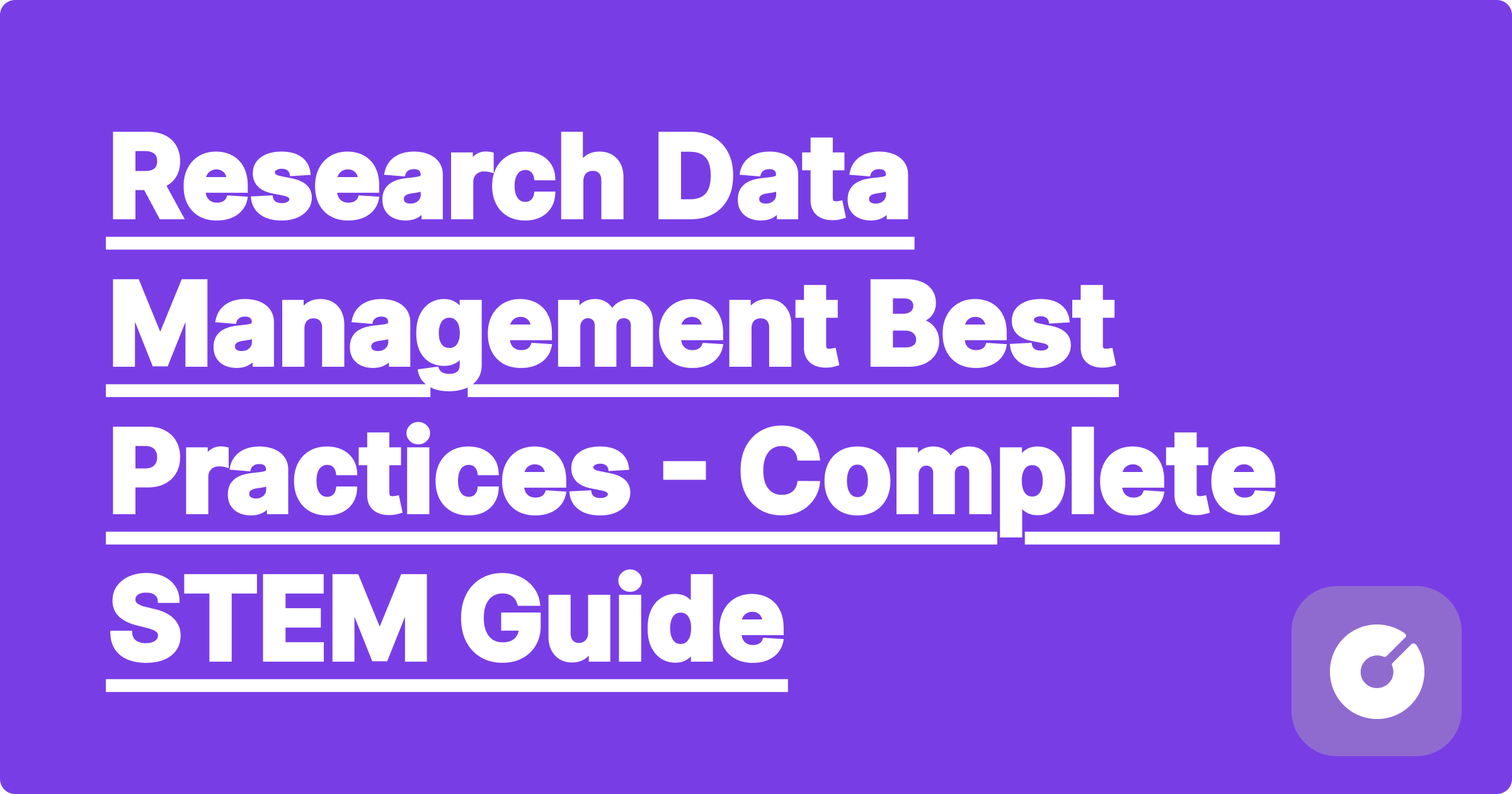## Level Up Your Research: Mastering Research Data Management Best Practices
Ever spent hours, days, even weeks searching for a specific data file, only to find it buried under a mountain of disorganized folders? Or worse, lost it entirely? In the fast-paced world of STEM research, efficient data management isn't just a good idea – it's a necessity. Poor data management can lead to wasted time, duplicated efforts, compromised research integrity, and even publication delays. This post provides a comprehensive guide to research data management (RDM) best practices, specifically tailored for STEM college students aiming to build strong research skills and future-proof their careers.
## Core Concepts: Understanding the Foundation of RDM
Effective RDM hinges on several key concepts:
**1. Data Organization:** This is the cornerstone. Implement a structured file naming convention from the outset. Avoid generic names like "Data1.csv" or "ExperimentResults.txt." Instead, use descriptive names incorporating date, experiment parameters, and sample identifiers (e.g., "2024-10-27_Temperature_25C_SampleA.csv"). This system drastically improves searchability and understandability.
**2. Metadata Management:** Metadata is "data about data." It describes your datasets, providing context and enabling discoverability. Essential metadata includes:
* **Project Title and Description:** A concise summary of the research project.
* **Data Description:** Details on the data type, units, collection methods, and any relevant processing steps.
* **Sample Information:** Specific identifiers for samples, locations, and relevant attributes.
* **Experimental Parameters:** Detailed information about the experimental setup and conditions.
* **Author Information:** Names and affiliations of researchers involved.
**3. Version Control:** As your data evolves through analysis and processing, track changes using version control systems like Git. This allows you to revert to previous versions if needed and provides a transparent history of your data's evolution. GitHub, GitLab, and Bitbucket are popular platforms for hosting repositories. For example, using Git, you could commit changes with descriptive messages:
```bash
git add .
git commit -m "Added outlier removal script and updated analysis results"
git push origin main
```
**4. Data Security and Privacy:** Protect your data from unauthorized access and accidental loss. Utilize strong passwords, encryption, and secure storage solutions like university-provided cloud services or encrypted external hard drives. Consider data anonymization techniques if dealing with sensitive personal information.
**5. Data Backup and Archiving:** Regular backups are critical. Employ a multi-tiered backup strategy, including local backups, cloud backups, and potentially off-site storage. Establish a data retention policy, outlining how long data should be stored and under what conditions it should be archived.
## Practical Examples and Case Studies
**Case Study 1: Genomics Research:** A genomics student working on sequencing data needs to manage terabytes of data. Using cloud storage solutions like AWS S3 or Google Cloud Storage is crucial for scalability and accessibility. Each experiment should have a dedicated folder with meticulously documented metadata describing the sequencing platform, samples, and analysis steps. Version control is essential to track changes in analysis pipelines.
**Case Study 2: Materials Science:** A materials science student is characterizing the properties of a new alloy. They should maintain a detailed lab notebook (digital or physical) documenting experimental parameters, results, and any observations. Using a spreadsheet (like a well-structured CSV) to store the quantitative data, alongside a clear file naming convention, ensures easy analysis and reporting.
## Step-by-Step Implementation Guide
**1. Develop a Data Management Plan (DMP):** Before starting a project, create a DMP outlining your data organization strategy, metadata standards, backup plan, and data sharing policies. Many universities provide DMP templates and support services.
**2. Choose a Data Storage Solution:** Select a storage solution that suits your needs and resources. This could range from local drives and network drives to cloud storage services like Dropbox, Google Drive, or specialized research data repositories.
**3. Implement a Consistent File Naming Convention:** Establish a standardized naming system for all files. This significantly reduces the time spent searching for files later.
**4. Utilize Metadata Standards:** Adopt established metadata standards whenever possible, for example, using Dublin Core for describing datasets. This ensures interoperability and facilitates data discovery.
**5. Employ Version Control:** Use Git to track changes in your code, data analysis scripts, and datasets. This allows you to easily revert to previous versions if needed.
**6. Regularly Back Up Your Data:** Implement a multi-tiered backup strategy involving local, cloud, and potentially off-site backups. Test your backups regularly to ensure they function correctly.
**7. Secure Your Data:** Use strong passwords, access controls, and encryption to protect your data from unauthorized access. Familiarize yourself with your institution's data security policies.
**8. Document Your Work:** Keep thorough records of your experimental procedures, data analysis steps, and interpretations. This is crucial for reproducibility and transparency.
## Recommended Tools and Resources
* **Version Control Systems:** Git, GitHub, GitLab, Bitbucket
* **Cloud Storage:** Dropbox, Google Drive, OneDrive, AWS S3, Google Cloud Storage
* **Data Management Platforms:** Dataverse, Figshare, Zenodo
* **Metadata Standards:** Dublin Core, DataCite
* **Lab Notebooks:** Evernote, OneNote, LabArchives
## Conclusion and Next Steps
Effective RDM is a crucial skill for any STEM professional. By implementing the best practices outlined in this post, you can significantly improve the efficiency, reproducibility, and impact of your research. Start by creating a simple data management plan for your current project and gradually incorporate more advanced techniques as you gain experience. Engage with your university's research support services for further assistance and training. Investing in your RDM skills will not only enhance your academic work but also make you a more valuable and competitive researcher in the future job market. Mastering RDM is not just about managing files; it’s about managing your scientific legacy.
Related Articles
Explore these related topics to enhance your understanding:
